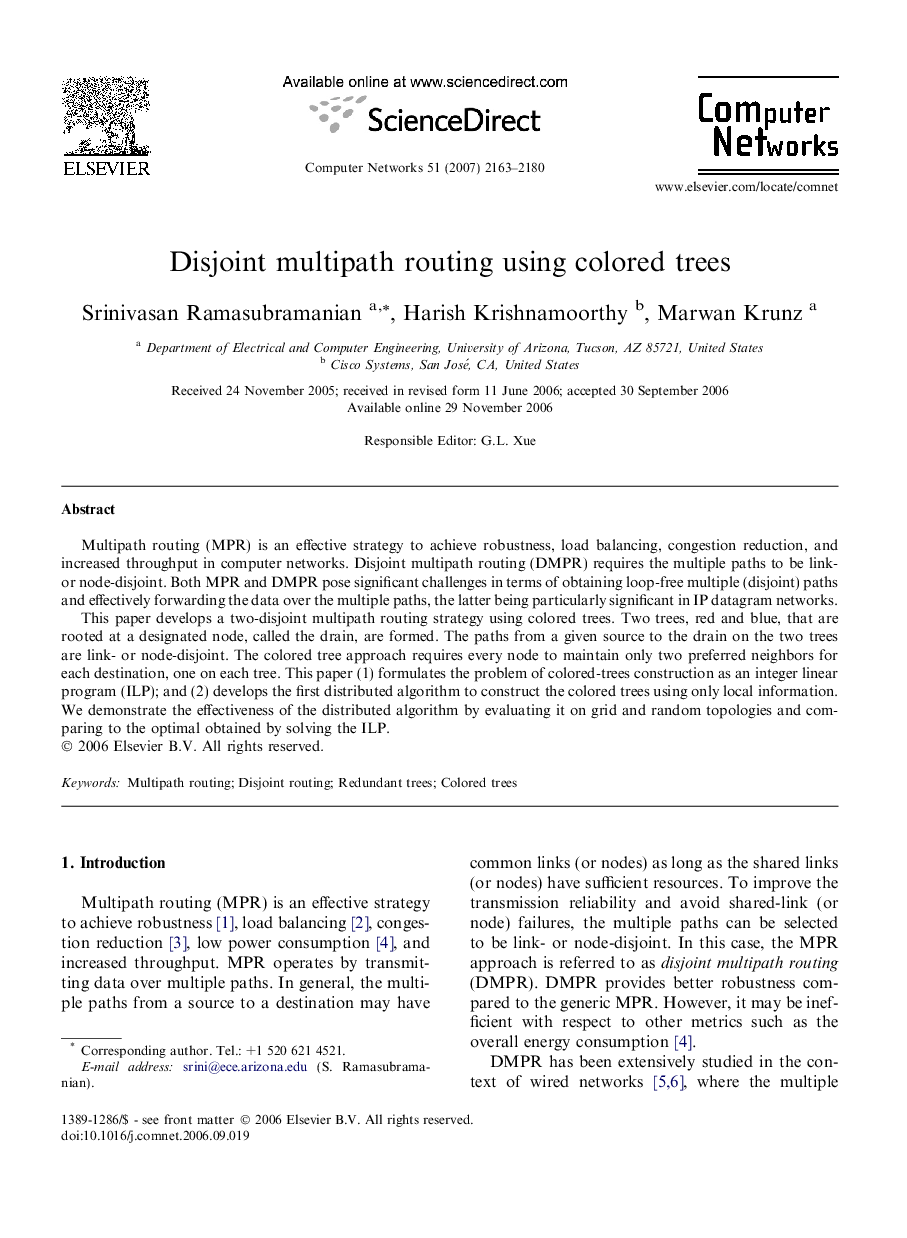| Article ID | Journal | Published Year | Pages | File Type |
|---|---|---|---|---|
| 452726 | Computer Networks | 2007 | 18 Pages |
Multipath routing (MPR) is an effective strategy to achieve robustness, load balancing, congestion reduction, and increased throughput in computer networks. Disjoint multipath routing (DMPR) requires the multiple paths to be link- or node-disjoint. Both MPR and DMPR pose significant challenges in terms of obtaining loop-free multiple (disjoint) paths and effectively forwarding the data over the multiple paths, the latter being particularly significant in IP datagram networks.This paper develops a two-disjoint multipath routing strategy using colored trees. Two trees, red and blue, that are rooted at a designated node, called the drain, are formed. The paths from a given source to the drain on the two trees are link- or node-disjoint. The colored tree approach requires every node to maintain only two preferred neighbors for each destination, one on each tree. This paper (1) formulates the problem of colored-trees construction as an integer linear program (ILP); and (2) develops the first distributed algorithm to construct the colored trees using only local information. We demonstrate the effectiveness of the distributed algorithm by evaluating it on grid and random topologies and comparing to the optimal obtained by solving the ILP.
